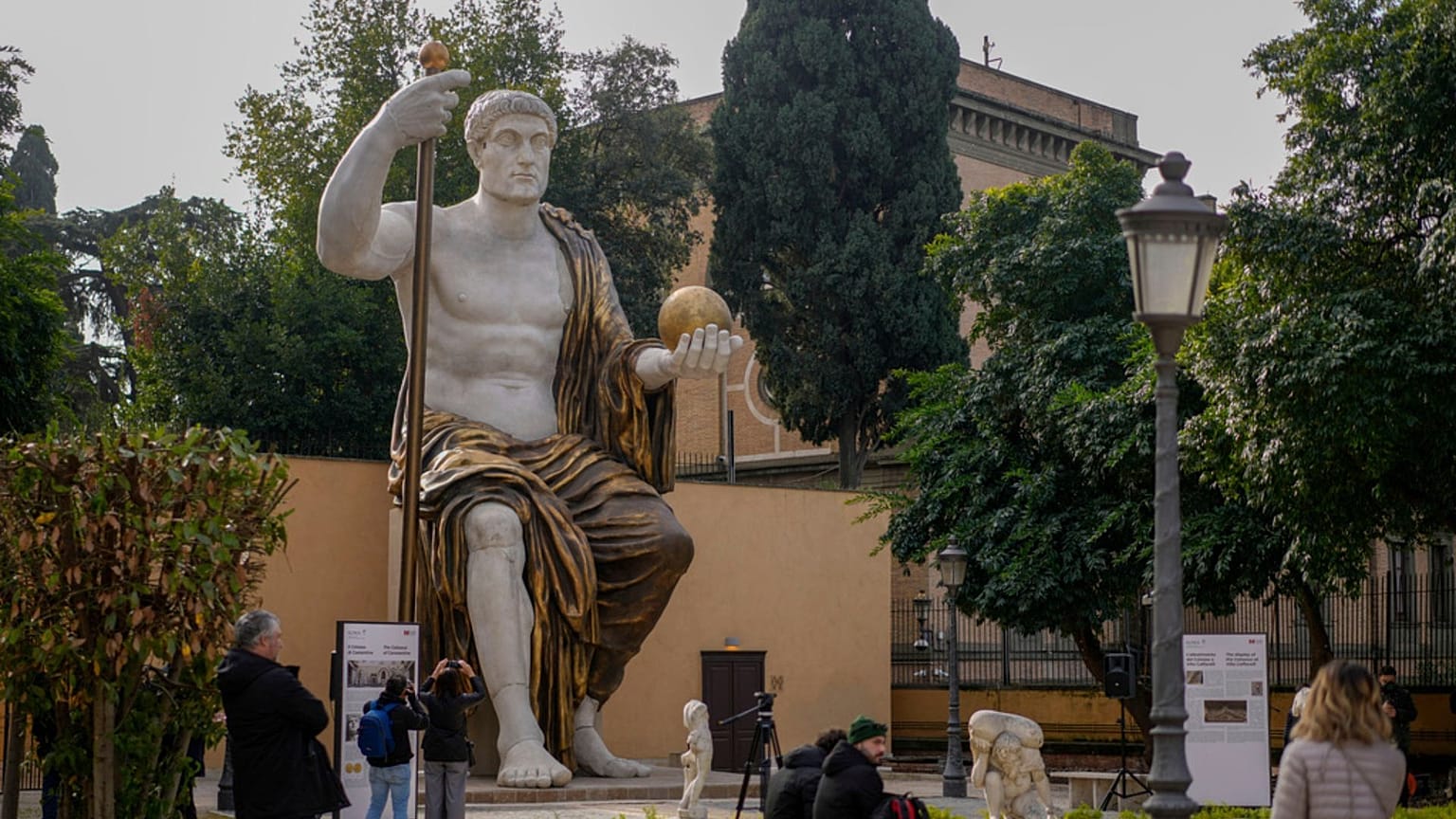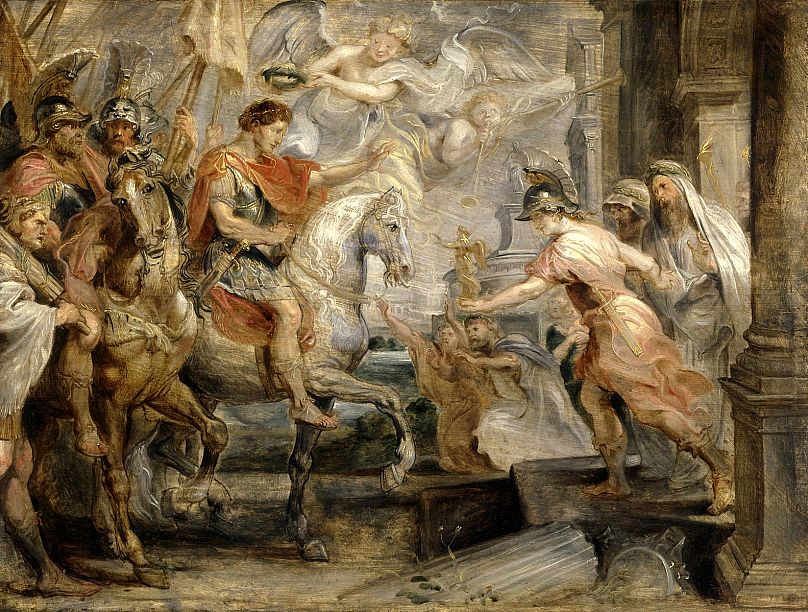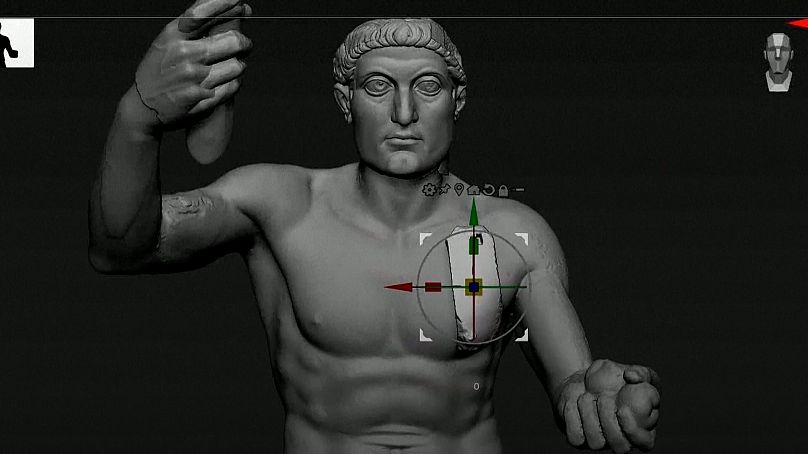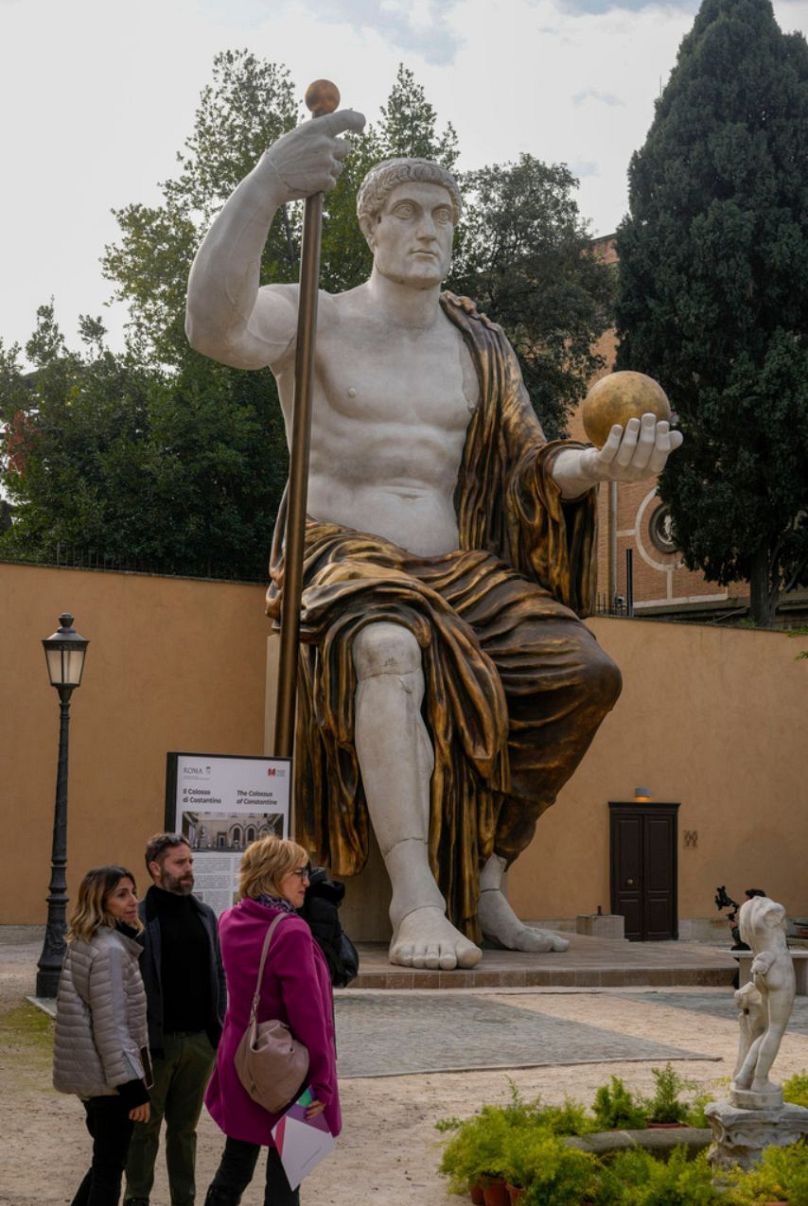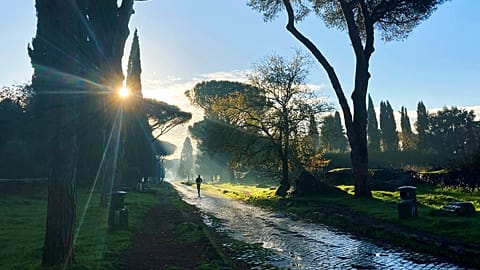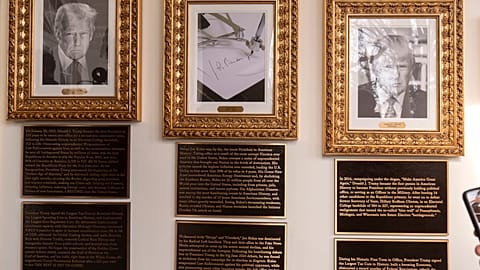The ancient 11-metre structure was recreated using high tech software to scan a handful of surviving fragments.
It once sat majestically at the heart of ancient Rome.
Now a vast statue of Emperor Constantine the Great is returning to the Eternal City thanks to a high-tech reconstruction based on surviving marble fragments.
"It's somewhere between documenting and recreating and interpreting. But I really hope that this is the beginning of a revolution, about how to share and how to show," explains Adam Lowe, the director of Factum Foundation, who oversaw the meticulous reconstruction process.
Who was Constantine the Great?
Born in 306 AD in Naissus, now part of Serbia, Constantine became one of the most influential Roman leaders of all time, strengthening the empire enormously.
But he is perhaps most famous for having converted to Christianity, and experts believe the enormous statue of him served as a recognition that Christianity had become the empire’s religion.
The so-called Colossus of Constantine, which dates to the early 4th century, was a monumental statue erected to celebrate Constantine’s reign.
Originally some 11 metres tall, it was later broken up and pillaged for bronze. In the 15th century, the few surviving fragments were found: the head, right arm, wrist, right hand, right knee, right shin, right foot and left foot.
Despite the surviving fragments being rediscovered in 1486, it was initially mistaken for a statue of Emperor Commodus. It was only at the end of the 1800s that the fragments were correctly identified as being part of the Colossus of Constantine.
How was the giant statue reconstructed?
Now, Romans and tourists alike will be able to admire a copy of the statue in its entirety, completely similar to the original, thanks to 14 months of work by the Factum Foundation.
Based in Madrid, Factum Foundation creates accurate and high-resolution digital documentation of cultural heritage sites and works of art around the world, to make facsimiles of destroyed, damaged, looted or lost artworks.
They spent three days scanning the fragments in March 2022 using photogrammetry techniques. A 3D model was then made of each fragment, after which it was placed on the digital version of the statue, which drew on the shapes of other cult statues from that era in similar poses.
The complex reconstruction by the foundation had to take several factors into account, such as the type of marble the fragments are made out of, their restoration, and how to add on replicas of the missing parts.
Once the 3D scanning was done, they set about reassembling the Colossus. The team used resin and polyurethane, as well as marble powder, gold leaf and plaster cast for the marble and bronze parts of the statue. For the internal structure, which was likely originally made of brick, wood and metal bars, they created a support in aluminium.
The imposing recreation of the seated emperor is now located in a side garden of the Capitoline Museums, just around the corner from the courtyard where the original fragments of Constantine's giant feet, hands and head are prime tourist attractions.
Check out the video above to see an inside look of how the historic statue was recreated.















